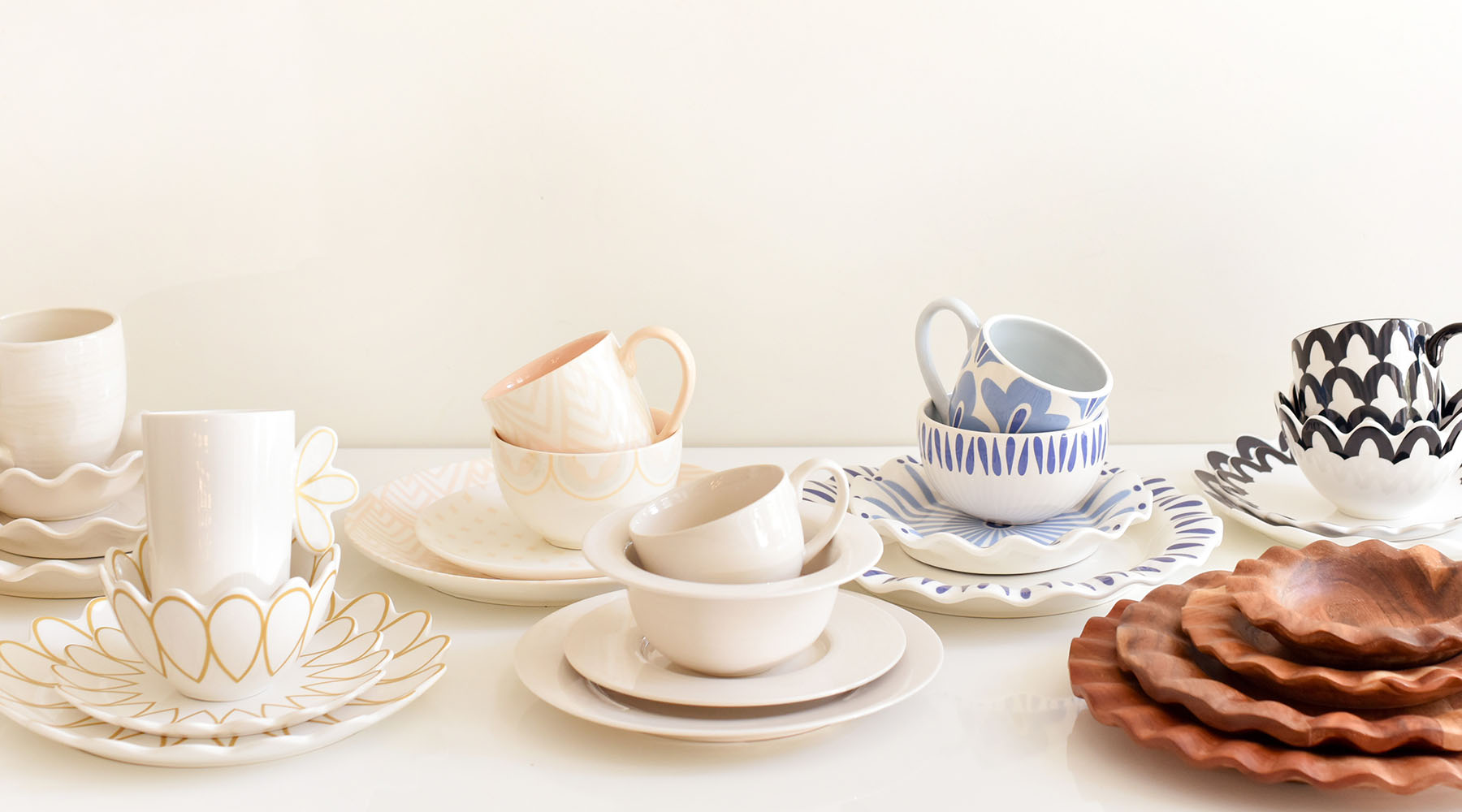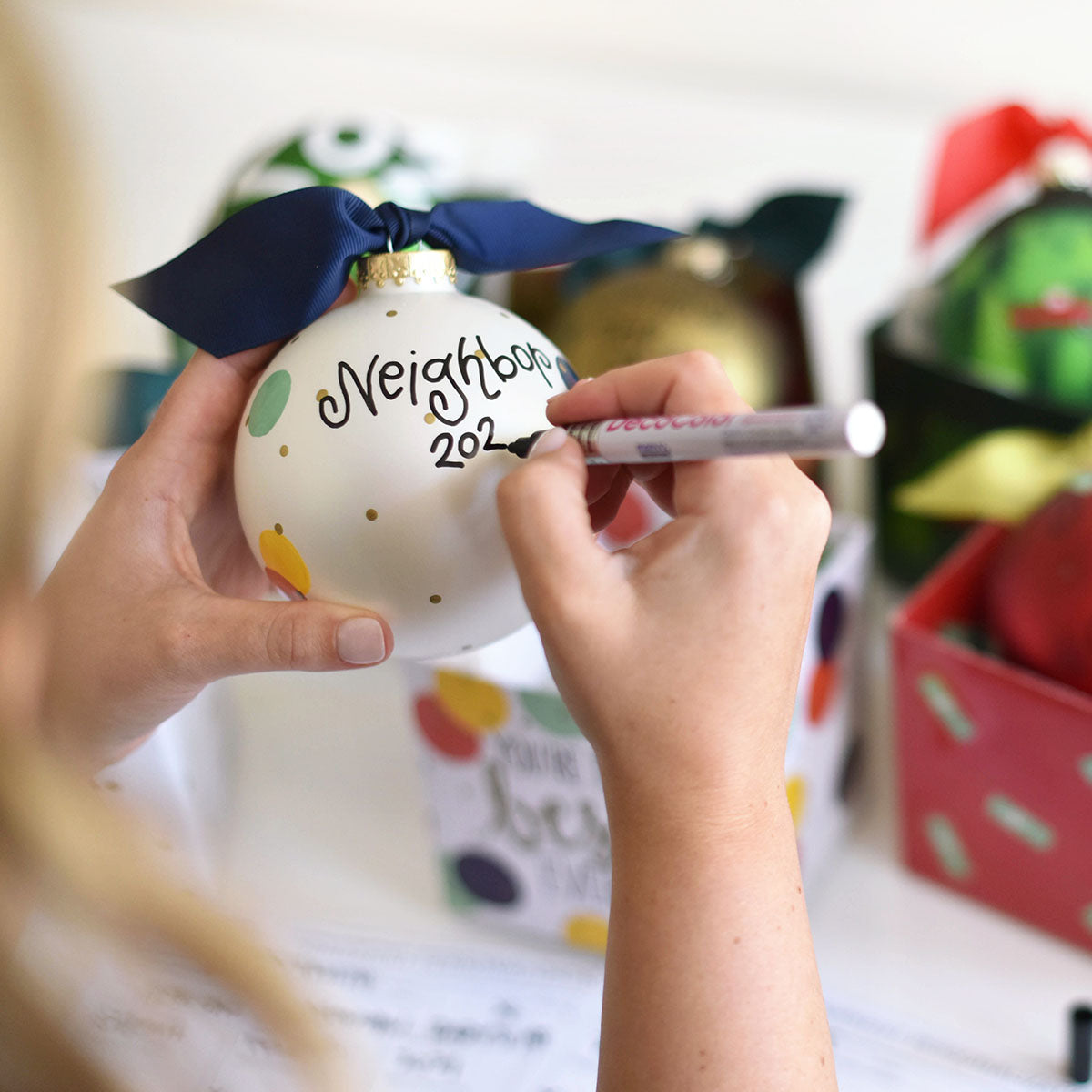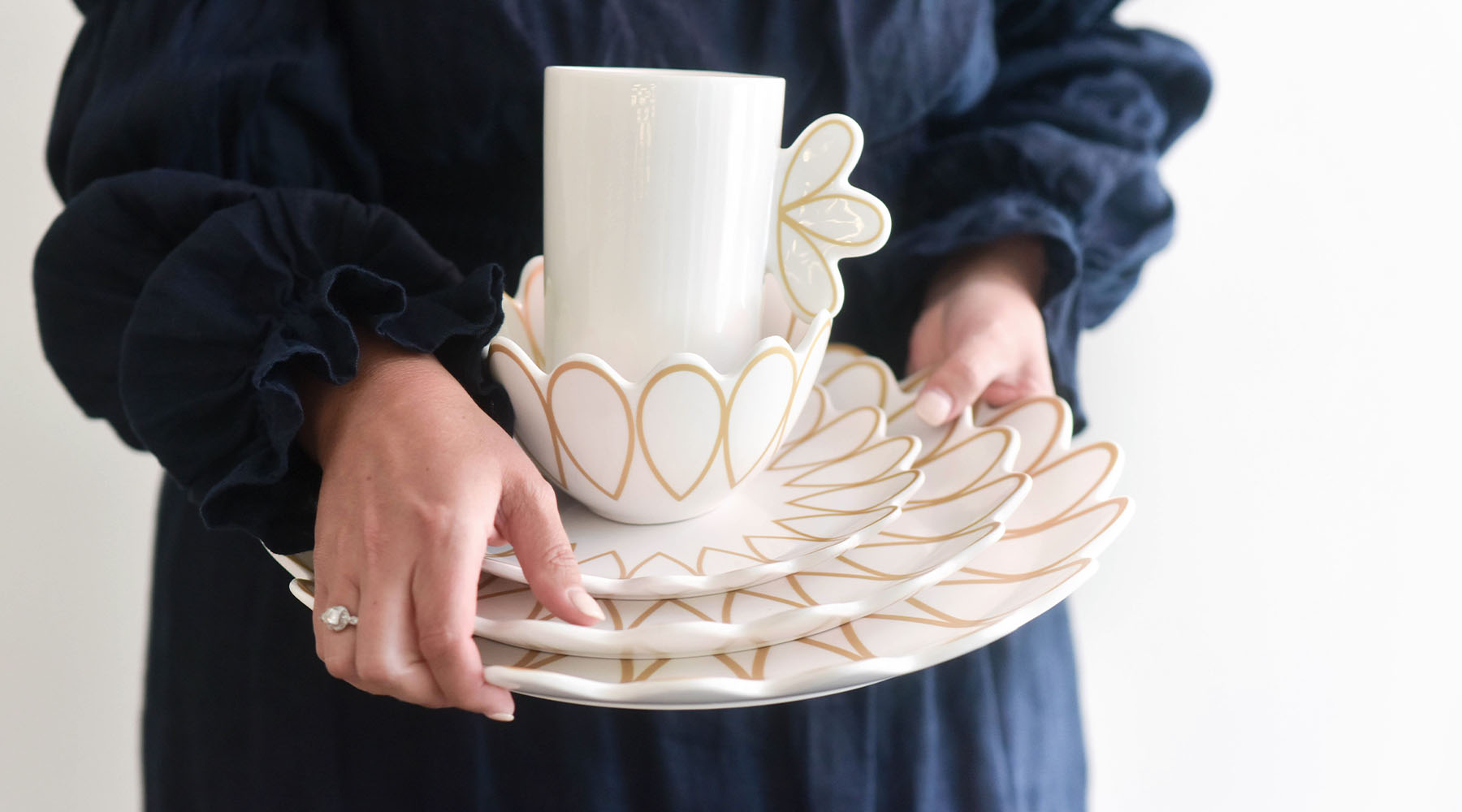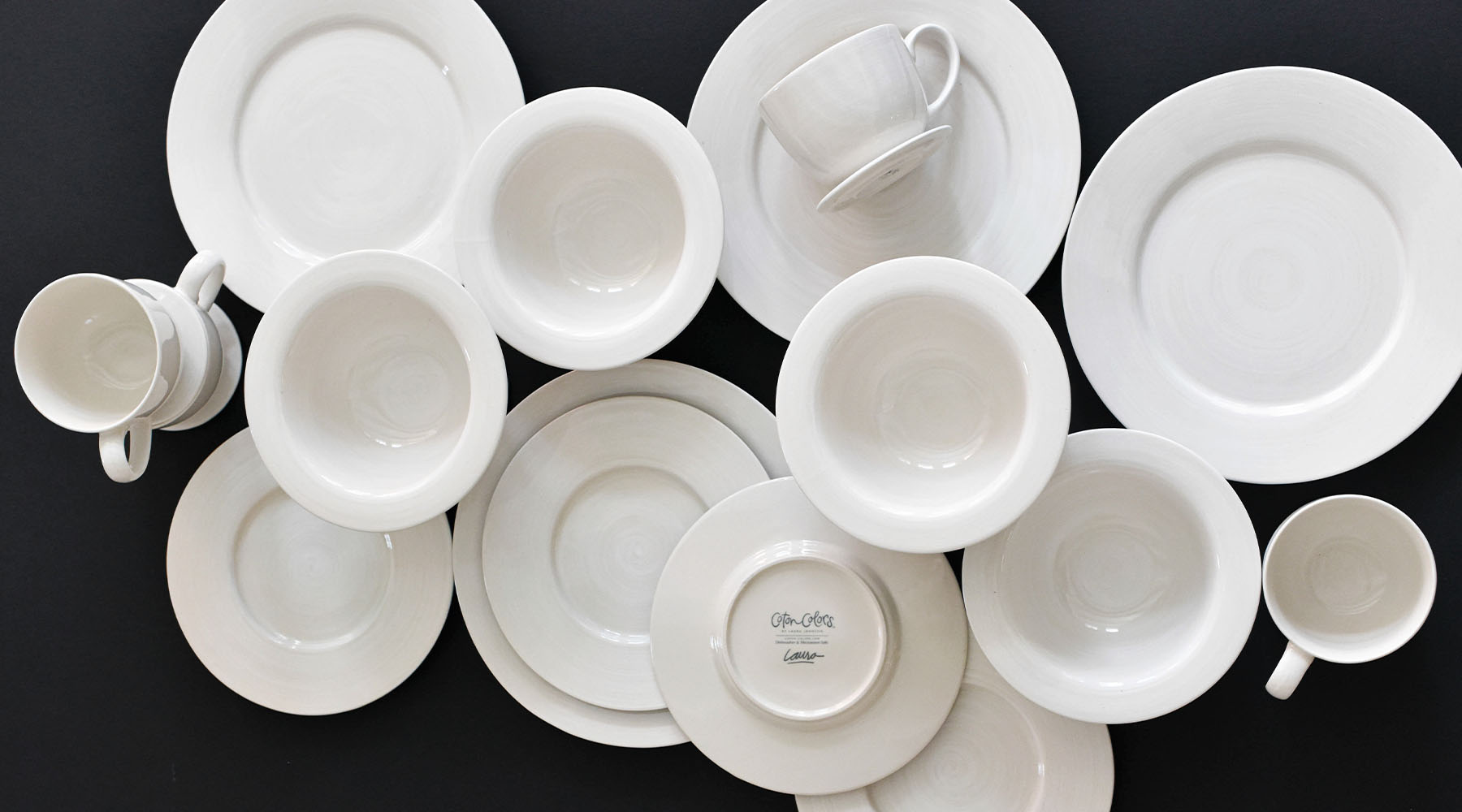
Using Salad Plates for Meals and More
While salads provide a burst of fresh flavor at the start of a meal, it is the salad plate and its versatility that we like to celebrate. These small plates are useful in so many situations — and can even bring a colorful element to your table and your home décor. You’ll find that adding these to your dish setting will inspire innovative and alluring tablescapes to create innovative and alluring displays to welcome your guests as you gather around the table.
Brighten Up Your Dishware with Pretty Plates
When it comes to setting the table, we love having options to choose from. That’s why we’ve spent years designing and curating plates of all shapes and sizes within our dinnerware collections. With endless possibilities for creative presentation, you’ll have fun designing unique tablescapes for any occasion. A diverse selection of plates allows us to showcase each homemade {or catered} dish in a way that enhances your meals, whether it’s for a dainty appetizer, a simple snack, a hearty main course, or a decadent dessert.
Plates of different shapes and sizes enable us to adapt to various serving styles, whether it's family-style dining with shared platters or a formal plated dinner. Ultimately, having a collection with various designs is something that we think is important because it enhances your table’s visual appeal and elevates your mealtime experience.
What is a Salad Plate?
Salad plates are smaller than dinner plates, making them perfect for salads or small servings of veggies or fruits. But these smaller plates aren’t just for those formal celebrations. You can use them for any event or as everyday dinnerware.
Why Use a Salad Plate?
Whether you're hosting a formal dinner party or a casual brunch gathering, small plates offer the flexibility to serve just about anything with elegance and flair. Their compact size encourages portion control and allows guests to savor each bite, while their sophisticated design adds a touch of refinement to any table setting. Salad plates allow you to serve salad separately and keep the salad, toppings, and dressing corralled.
3 Steps For Choosing a Salad Plate for the Occasion
When matching your salad plate to the event you’re hosting, you want to consider the pattern, color, and theme of the occasion. Is it a holiday? Maybe you want to add that festive element? Is the meal formal or informal? Think about what is needed, and then decide how you want to style the rest.
Step 1: Start with your Theme and Decide on a Dinner Plate Design
Since the smaller plates often sit atop the dinner plates in table settings, they can easily transform the whole look of a tablescape. Salad plates are perfect for mixing and matching with your other dinnerware sets.
They also offer a great opportunity to start curating your home collection, especially if you opt to invest in more neutral dinner plates and other tabletop essentials first. Salad or dessert plates, accessories, or napkins are a great place to easily add pattern, color, and interest.
Step 2: Decide on your Table Setting Style
Choose a matching tablescape or a design that is a mix of dinnerware. A matching tablescape creates a seamless look by using the same color in your dinner and salad plate. This offers a uniform and tidy appeal, allowing your dishes to highlight the food, table decorations, and theme.
If you are looking for something more unique you can opt for a mixed table setting or mixed salad plate tablescape. A mixed table setting is when the smaller plate’s color and/or pattern is different from your dinner plate. If you are looking for a maximalist approach, mixed salad plates are when the salad plates vary throughout the table.
Step 3: Consider the Pattern and Color
When creating a tablescape, you want to decide on coordinating patterns and colors. This is especially important when you are mixing up dinnerware patterns.
Typically for a matching tablescape, all of the dishes match. If you have a more extensive collection of dish sets, you can switch up the table settings while still creating a curated look by providing each guest a matching but unique setting.
For mixed table settings, you can set a unique tablescape when you coordinate patterns or colors instead of matching exactly. Choose a color to lean into or complementary designs that will create visual interest.
Our must-have salad plate designs include:
Where Does a Salad Plate Go in a Place Setting?
Traditionally, when you are setting a table, the salad plate goes to the left of the fork allowing the more compact dish to nestle nicely above the rest of the presentation. Another popular option, if soup is not served, is to stack the smaller plate on top of the one intended for dinner.
The version you choose depends on the tablescape you’d like to create and the food you’re serving. Either way, the smaller plate keeps that portion of the meal separate from ingredients that might wither the freshness of the fruits and vegetables presented. Dessert plates typically hide in the kitchen until that course is served.
What Can You Serve on a Salad Plate?
We cannot stress enough how versatile and multifunctional a salad plate is. You can serve {just about} anything on them with ease. Their smaller size makes for ideal snack plates, appetizer plates, dessert plates, and more. From dishing up traditional salads to contemporary desserts, smaller plates are a multifunctional must.
Find inspiration with a few of our tasty favorites:
5 Ways to Use a Salad Plate
Beyond their traditional role in dining, these plates serve as versatile and stylish accessories for various purposes around the home. Their compact size and elegant design make them ideal for more than just the salad course {for example, as dessert plates}. If you need more inspiration, here are five ways to use these oh-so-useful dishes.
Having plates of all shapes and sizes ensures that you have the perfect vessel for every dish, whether it's salad on our acacia wood ruffle plates or petit fours on salad plates doubling as dessert plates.
1. The Obvious: Your Salad Course
A small plate works well for this part of the meal, allowing you an opportunity to showcase all the fresh ingredients used. A plate also prevents dressing and toppings from sinking to the bottom like they might in a bowl. While many people eat salad prior to the main course, it’s traditional in some destinations like Italy and France to serve a salad after the entree course.
Offering a salad gives your table a burst of color before the other food is offered. But choose your dinnerware wisely. Bright patterned dishes work better with complementary colors. So, an every-color-in-the-rainbow fruit salad might work better with neutral hues than something with bold splashes.
Pro Tip: When arranging your table, you have the choice of placing each dish independently of one another in its own space. Or you can arrange the plates and bowls in a stack. Which version you select depends on your menu and your preference.
If you are doing a multi-course meal, for example, then you might opt for a dinnerware stack, placing the smaller plate or soup bowl on top of the dinner plate. This allows you to play with your space and create structural arrangements. A buffet, cocktail hour, or sweets table provides less opportunity for an elaborate set-up since your appetizer and dessert plates become more of a utility.
2. Pre-Dinner Appetizers Fit Perfectly
Small, pretty plates optimize your guests’ delight when sharing these before-the-main-event apéritifs. Whether people are choosing from an assortment of olives, nuts, protein, and crackers on a charcuterie board or are nibbling from passed trays, salad plates offer sturdy spaces for favorite bites during conversation. Since the plates are easy to hold, people can mingle even while navigating the food table.
Dishes made for appetizers specifically are usually an inch smaller than a traditional salad plate. This extra room matters and allows your guests to truly enjoy the designs of the dish as well as their food.
Play with shapes, colors, and designs — especially if the cocktail hour or appetizer course is served away from the main table. You can choose something that complements your overall theme or mix it up a bit.
3. Elevate After-Meal Treats With Dessert Plates
Salad and dessert plates are technically different, but they don’t have to be. A dessert plate has a diameter roughly of 7.25 to 8.5 inches. Coton Colors’ salad plates are 8 inches — as Goldilocks might say, not too big and not too small, but just right. There is plenty of room to hold food and showcase design.
Dessert brings us back to childhood, offering us our favorite treats. So, entice your friends and family with dessert plates that properly display the meal’s finale. Our Quatrefoil Plate features our handcrafted quatrefoil pattern in blush against a white background and provides a lovely dish for whatever sweet you might offer.
Pro Tip: Set the table with a salad plate atop a dinner plate at each place setting. As you complete the finishing touches like lighting candles or filling water glasses just before seating your guests, pull the salad plates off the place setting and stack them on the dessert table. This works best if you do not intend to serve a separate salad course or a salad course at all. You'll have a big impact tablescape design that makes a statement for your guests, but less cumbersome dishes to deal with at the main meal, and you'll enjoy dining off these dishes during the dessert course.
4. Smaller Portion Serving
Enjoy a smaller portion with a salad plate, ours are perfectly portioned for a sandwich and side or a snack. Our salad plates offer enough space for a light breakfast or lunch. A bright-colored, fun dish gives you a moment of levity during your normal routine. You can even enjoy each season by swapping in the appropriate dishes.
5. Stylish Trinket Dishes: On and Off the Table
Salad plates aren’t just for mealtime. They can double as chic trays for holding small items like jewelry, keys, or trinkets on bedside tables, dressers, or entryway consoles, adding a touch of sophistication to any space. You can even use them in your home décor, setting them up on plate stands to “wow” as accent pieces on the mantel or in glass cabinets.
Either focus on individual styles, putting a plate on a side or entry table, nightstand, or other space, or layer plates together, creating artistic sculptures in your hutch, on kitchen shelves, or even along your wall by hanging using plate stands in a collage or around a mirror. There are many ways you can decorate with your salad plates.
Salad plates are an essential part of a curated dinnerware collection. When you have a wide selection of styles, you can attain whatever vision you have for your table. These smaller plates provide an excellent addition to both new and more developed collections since they are so versatile, whether you use them for salads, as dessert plates, for appetizers, or as home décor.




















Leave a comment
This site is protected by hCaptcha and the hCaptcha Privacy Policy and Terms of Service apply.